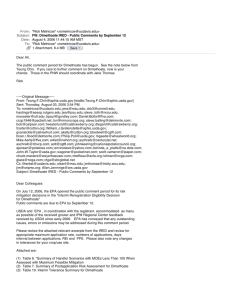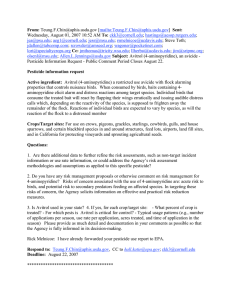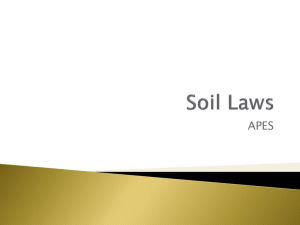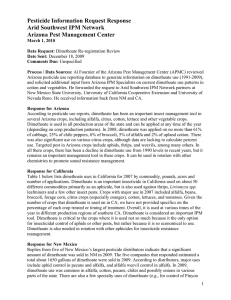From: "Rick Melnicoe" <>
advertisement
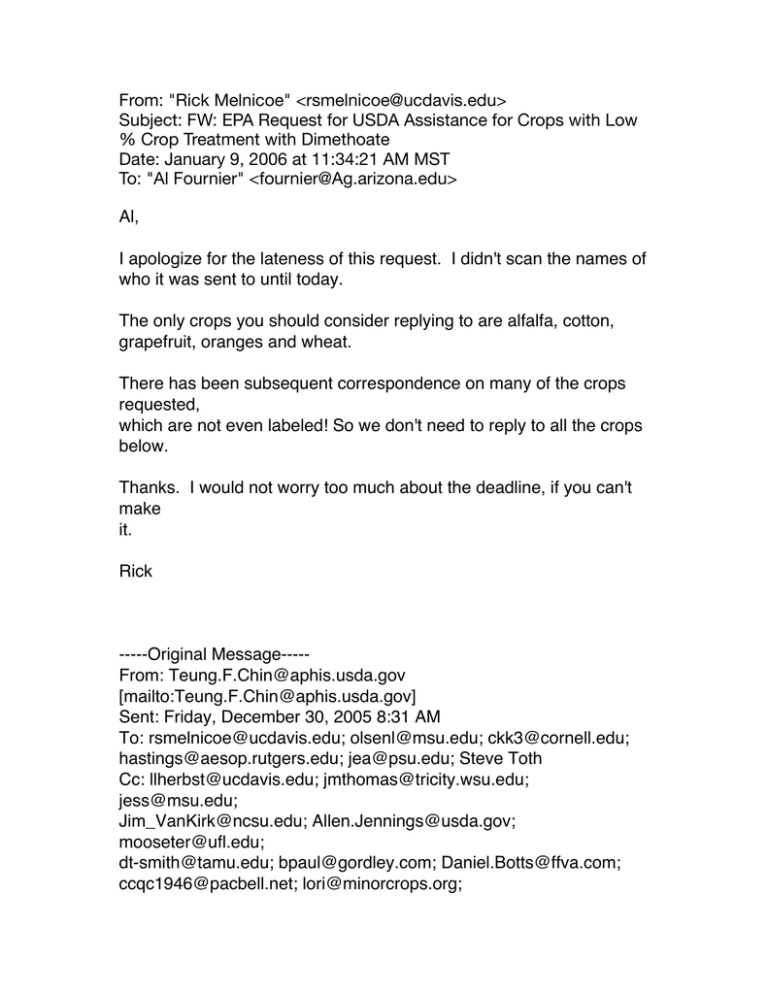
From: "Rick Melnicoe" <rsmelnicoe@ucdavis.edu> Subject: FW: EPA Request for USDA Assistance for Crops with Low % Crop Treatment with Dimethoate Date: January 9, 2006 at 11:34:21 AM MST To: "Al Fournier" <fournier@Ag.arizona.edu> Al, I apologize for the lateness of this request. I didn't scan the names of who it was sent to until today. The only crops you should consider replying to are alfalfa, cotton, grapefruit, oranges and wheat. There has been subsequent correspondence on many of the crops requested, which are not even labeled! So we don't need to reply to all the crops below. Thanks. I would not worry too much about the deadline, if you can't make it. Rick -----Original Message----From: Teung.F.Chin@aphis.usda.gov [mailto:Teung.F.Chin@aphis.usda.gov] Sent: Friday, December 30, 2005 8:31 AM To: rsmelnicoe@ucdavis.edu; olsenl@msu.edu; ckk3@cornell.edu; hastings@aesop.rutgers.edu; jea@psu.edu; Steve Toth Cc: llherbst@ucdavis.edu; jmthomas@tricity.wsu.edu; jess@msu.edu; Jim_VanKirk@ncsu.edu; Allen.Jennings@usda.gov; mooseter@ufl.edu; dt-smith@tamu.edu; bpaul@gordley.com; Daniel.Botts@ffva.com; ccqc1946@pacbell.net; lori@minorcrops.org; steve.balling@delmonte.com; bob@calpear.com; fwesterlund@calstrawberry.org; dlegard@calstrawberry.org; fcarter@cotton.org; William.J.Grefenstette@aphis.usda.gov; gvansickle@caltreefruit.com; bbedwell@cgtfl.com; brian.r.flood@delmonte.com; Philip.Poli@usda.gov; mgaede@wheatworld.org; rjarman@nfpafood.org; Mike.Aerts@ffva.com; willet@nwhort.org; aschreib@centurytel.net; aschreib@cbvcp.com Subject: EPA Request for USDA Assistance for Crops with Low % Crop Treatment with Dimethoate Dear Colleagues: EPA is in the early stages of preparing risk mitigation decisions for dimethoate. Because of the August 2006 FQPA deadline to reassess all tolerances, dimethoate is scheduled by EPA for final decisions within the next several months. Malathion is on a similar track. I am contacting you instead of my OPMP colleague, Phil Poli, who is on extended leave. EPA has requested USDA assistance in obtaining benefits information for 24 crops with less than 1% crop treatment with dimethoate. EPA will be initiating outreach directly for other commodities of interest. Per EPA, the crops with less than 1% crop treated are: alfalfa, asparagus, carrots, corn, cotton, grapefruit, onions, oranges, spring wheat, peanuts, pears, plums and prunes, pumpkins, sorghum, squash, strawberries, sugar beets, sunflowers, sweet corn, tobacco, wheat, soybeans, and safflower. Please respond in three weeks to the following EPA questions and add your contact information as well should follow-up be required as EPA prepares for risk mitigation decisions. By answering as many questions as possible, EPA will be able to further refine the risk assessment for dimethoate by improving the ecological risk and drinking water numbers, address REI issues and obtain needed benefits information. The answers to some questions may be contained in existing crop profiles and Pest Management Strategic Plans (PMSPs) but EPA has not had opportunity to collate the information; focusing instead on the crops with larger percent crop treatment. The short time frame precludes OPMP from collating the information as well so we are relying on experts in the field. Per EPA to OPMP, "Please consider the best way for us to work together to get at this information quickly, since our time frame is short. If a use is to be maintained, we will need some documentation to support that use in light of existing risks. Specifically, it would be helpful if growers could provide answers to as many of the following questions as possible." (1) In what region (state/county, etc.) of the US does the use occur? (2) What are the pests that they feel are critical for the low usage of dimethoate use? (3) What are the details of their typical usage pattern (e.g., number of applications per season, use rate per application, acres treated, time of application in the season?) (4) What worker activities typically occur when they need to apply dimethoate? (5) What alternatives, if any, do they feel they would have to use to replace dimethoate? Thank you again for your assistance. Please forward this request to others as appropriate. I will keep you apprised and will be sending out a similar request today for malathion. Best Wishes for a Happy New Year to you and yours! Please do not hesitate to contact me if you have any questions or comments. Best regards, Teung ~~~~~~~~~~~~~~~~~~~~~~~~~~~~~~~~~~~~~~~~~~~~~ Teung F. Chin, Ph.D. Biological Scientist Office of Pest Management Policy Agricultural Research Service United States Department of Agriculture LOCATED AT: USDA Animal & Plant Health Inspection Service 4700 River Road, Unit 149 (Room 3D-06.8) Riverdale, MD 20737-1237 Phone (301) 734-8943 Fax (301) 734-5992 Teung.F.Chin@usda.gov http://www.ars.usda.gov/opmp ~~~~~~~~~~~~~~~~~~~~~~~~~~~~~~~~~~~~~~
